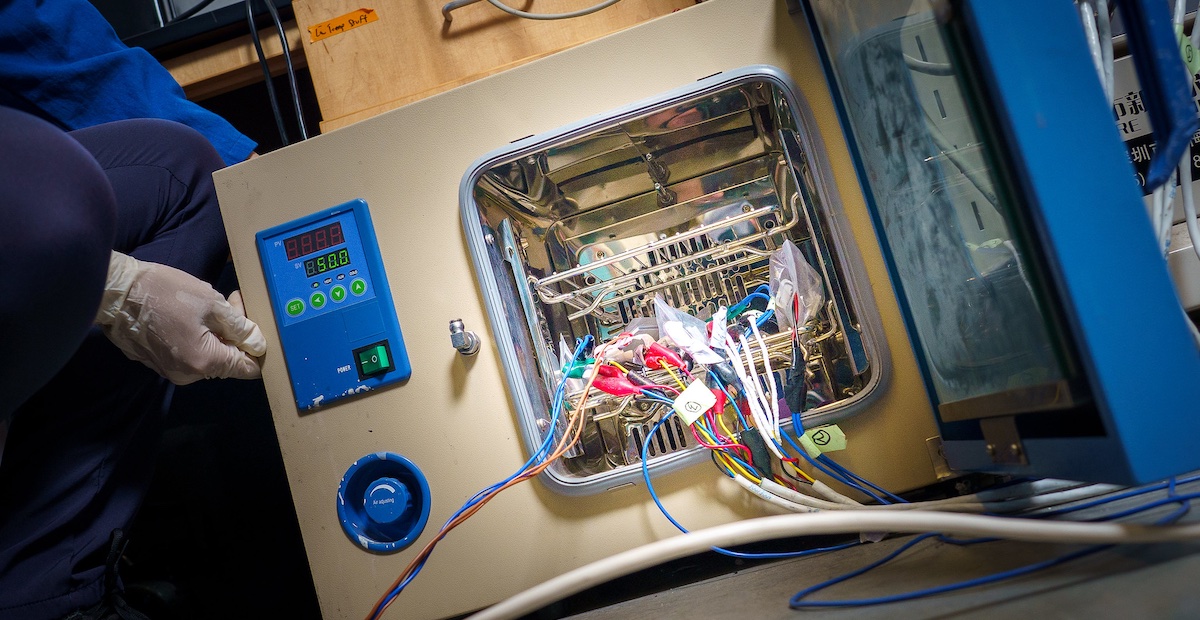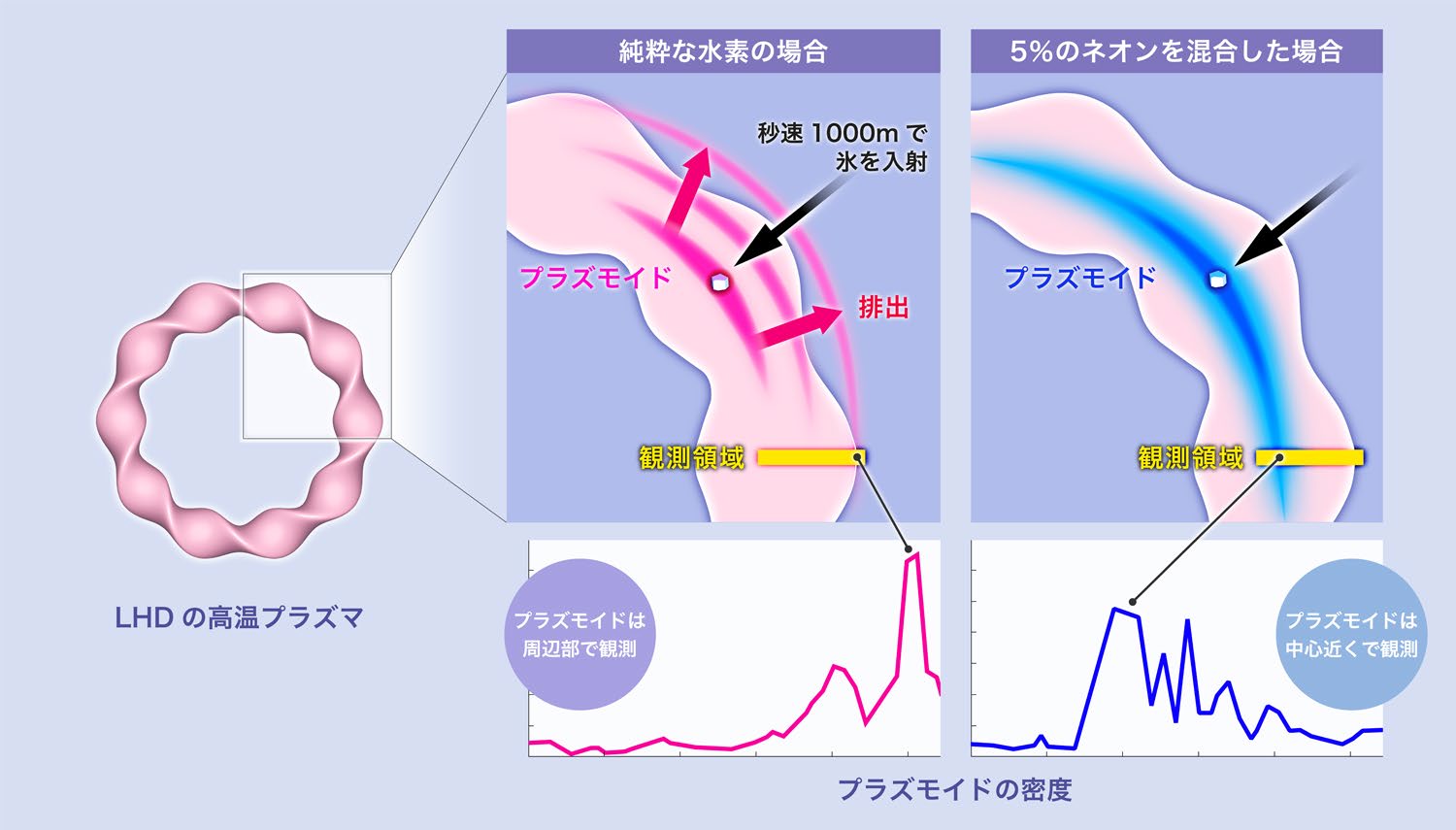NRELの研究者、効率と安定性を高める成長アプローチを提供 REL Researchers Provide Growth Approach That Boosts Efficiency, Stability
2022-12-22 米国国立再生可能エネルギー研究所(NREL)
タンデム型太陽電池を作るには、臭素とヨウ素を豊富に含む安定性と効率の高いペロブスカイトを開発することが重要だと考えられている。しかし、この2つの元素は光や熱にさらされると分離する傾向があるため、太陽電池の電圧や安定性が制限される。
NRELのシニアサイエンティストで、このプロジェクトの主任研究者であり、新しい論文の筆頭著者であるKai Zhu氏は、「この新しい成長法により、相分離を大幅に抑制することができます」と述べています。
新しいアプローチでこの問題を解決し、20%以上の効率と1.33ボルトの光起電力、高温で1,100時間連続運転しても効率がほとんど変化しないワイドバンドギャップ太陽電池を作製しました。この新しいアプローチにより、オールペロブスカイト型タンデムセルでは、27.1%の効率と2.2ボルトの高い光起電力が得られ、良好な動作安定性が得られました。
タンデムセルでは、ワイドバンドギャップ層の上にナローバンドギャップ層が蒸着されている。バンドギャップの違いにより、太陽光のスペクトルをより多く取り込み、電気に変換することができる。
ペロブスカイトとは、基板上に化学物質を蒸着して形成される結晶構造を指す。臭素の濃度が高いと、ペロブスカイト膜の結晶化が速くなり、太陽電池の性能を低下させる欠陥が発生しやすい。これらの問題を軽減するためにさまざまな戦略が試みられてきたが、ワイドバンドギャップ型ペロブスカイト太陽電池の安定性はまだ不十分と考えられている。
今回開発されたアプローチは、朱教授らが今年初めに発表した、典型的なペロブスカイト型セルを反転させる研究を基礎としている。この反転構造を用いることで、効率と安定性の両方が向上し、タンデム型太陽電池を容易に組み込むことができた。
NREL主導のグループは、これと同じアーキテクチャを用い、従来のペロブスカイトの製造方法からさらに遠ざかった。従来の方法では、結晶化する薬品に塗布する防溶媒を使って、均一なペロブスカイト膜を形成していた。新しい方法では、窒素の流れを薬品に吹き付ける「ガスクエンチング」と呼ばれる方法を採用した。その結果、臭素とヨウ素が分離する問題を解決し、構造と光電子特性が改善されたペロブスカイト薄膜を得ることができた。
反溶媒法は、ペロブスカイト膜内で結晶を急速かつ均一に成長させ、互いに混み合い、粒界が接する部分に欠陥が生じることを可能にする。ガス急冷法は、高ブロム含有ペロブスカイト化合物に適用すると、結晶を上から下へぎっしり詰めて成長させるため、結晶が一つの粒子のようになり、欠陥の数が大幅に減少する。トップダウン成長法では、セルの上部付近で臭素が多く、バルクで少ないという勾配構造が形成される。また、ガスクエンチ法は、反溶媒法よりも統計的に再現性が高かった。
その結果、ワイドバンドギャップ層で20%を超える効率と、1,100時間にわたる劣化が5%未満という動作安定性を達成した。ボトムセルとの組み合わせでは、27.1%の効率を達成した。
研究者らは、乾燥ガスとしてアルゴンや空気も試したが、同様の結果が得られたことから、ガスクエンチ法がワイドバンドギャップ型ペロブスカイト太陽電池の性能を向上させる一般的な方法であることが示された。
この新しい成長法は、高性能なオールペロブスカイト型タンデム素子の可能性を示し、シリコンを組み込んだものなど、他のペロブスカイト型タンデム構造体の開発を進展させた。
<関連情報>
- https://www.nrel.gov/news/press/2022/new-method-addresses-problem-with-perovskite-solar-cells.html
- https://www.science.org/doi/10.1126/science.adf0194
- https://www.nature.com/articles/s41586-022-05268-x
高安定ワイドバンドギャップペロブスカイト太陽電池のための組成テクスチャーエンジニアリング Compositional texture engineering for highly stable wide-bandgap perovskite solar cells
Qi Jiang ,Jinhui Tong* ,Rebecca A. Scheidt ,Xiaoming Wang,Amy E. Louks ,Yeming Xian,Robert Tirawat ,Axel F. Palmstrom ,Matthew P. Hautzinger ,Steven P. Harvey ,Steve Johnston ,Laura T. Schelhas ,Bryon W. Larson ,Emily L. Warren ,Matthew C. Beard ,Joseph J. Berry ,Yanfa Yan ,Kai Zhu
Science Published:22 Dec 2022
DOI: 10.1126/science.adf0194
Rapid quenching maintains the mix
Tandem perovskite solar cells require stable, efficient wide-bandgap perovskites with mixed bromide and iodide anions, but these anions are prone to segregation during crystallization that can then limit the device voltage and operational stability. Jiang et al. determined that a gentle gas-quench method produced a bromine-rich surface layer, and that subsequent columnar growth created films with reduced defect density. Solar cells based on these films maintained 90% of their efficiency at 65°C for more than 2200 hours. All-perovskite tandem cells exhibited 27.1% efficiency resulting from a high open-circuit voltage of 2.2 volts. —PDS
Abstract
The development of highly stable and efficient wide-bandgap (WBG) perovskite solar cells (PSCs) based on bromine-iodine (Br–I) mixed-halide perovskite (with Br greater than 20%) is critical to create tandem solar cells. However, issues with Br–I phase segregation under solar cell operational conditions (such as light and heat) limit the device voltage and operational stability. This challenge is often exacerbated by the ready defect formation associated with the rapid crystallization of Br-rich perovskite chemistry with antisolvent processes. We combined the rapid Br crystallization with a gentle gas-quench method to prepare highly textured columnar 1.75–electron volt Br–I mixed WBG perovskite films with reduced defect density. With this approach, we obtained 1.75–electron volt WBG PSCs with greater than 20% power conversion efficiency, approximately 1.33-volt open-circuit voltage (Voc), and excellent operational stability (less than 5% degradation over 1100 hours of operation under 1.2 sun at 65°C). When further integrated with 1.25–electron volt narrow-bandgap PSC, we obtained a 27.1% efficient, all-perovskite, two-terminal tandem device with a high Voc of 2.2 volts.
高効率で安定した反転ペロブスカイト太陽電池のための表面反応 Surface reaction for efficient and stable inverted perovskite solar cells
Qi Jiang,Jinhui Tong,Yeming Xian,Ross A. Kerner,Sean P. Dunfield,Chuanxiao Xiao,Rebecca A. Scheidt,Darius Kuciauskas,Xiaoming Wang,Matthew P. Hautzinger,Robert Tirawat,Matthew C. Beard,David P. Fenning,Joseph J. Berry,Bryon W. Larson,Yanfa Yan & Kai Zhu
Nature Published:01 September 2022
DOI:https://doi.org/10.1038/s41586-022-05268-x

Abstract
Perovskite solar cells (PSCs) with an inverted structure (often referred to as the p-i-n architecture) are attractive for future commercialization due to their easily scalable fabrication, reliable operation, and compatibility with a wide range of perovskite-based tandem device architectures1,2. However, the power conversion efficiency (PCE) of p-i-n PSCs falls behind n-i-p (or normal) structure counterparts3-6. This large performance gap could undermine efforts to adopt p-i-n architectures, despite their other advantages. Given the remarkable advances in perovskite bulk materials optimization over the past decade, interface engineering has become the most important strategy to push PSC performance to its limit7,8. Here, we report a reactive surface engineering approach based on a simple post-growth treatment of 3-(Aminomethyl)pyridine (3-APy) on top of a perovskite thin film. First, the 3-APy molecule selectively reacts with surface FA+, reducing perovskite surface roughness and surface potential fluctuations associated with surface steps/terraces. Second, the reaction product on the perovskite surface decreases the formation energy of charged iodine-vacancies, leading to effective n-type doping with a reduced work function in the surface region. With this reactive surface engineering, the resulting p-i-n PSCs obtained a PCE over 25%, along with retaining 87% of the initial PCE after over 2400 h of one-sun operation at about 55°C in air.



